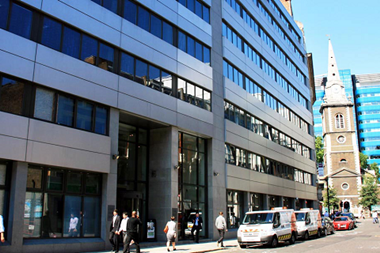The days when businesses were grouped by sector, with law firms congregating in Holborn, bankers in the City, start-ups in Shoreditch and creatives in Soho, are long past. Instead, London’s locational barriers are disintegrating as companies that previously siloed themselves jockey for positions around emerging new business neighbourhoods across the capital.

Cushman & Wakefield’s latest Movers & Shakers report highlights the redefining of London’s business districts, with Aldgate, Whitechapel and London Bridge seeing the greatest influx of new occupiers. Meanwhile, the City has developed a more diverse occupier base, attracting media and tech businesses from throughout London.
We’ve witnessed the demise of the business silo for two key reasons. First, the increasing cost of space in the traditional prime areas has resulted in companies looking to neighbourhoods that are more competitively priced and offer more flexibility.
Second, the rise of technology has connected businesses with their clients so effectively that they no longer need to be geographically close to them to serve their needs.
The de-clustering of London’s silos and the emergence of the new business districts has resulted in some important benefits for organisations.
This is a trend we have observed first hand at Workspace with our 68 London locations - in areas such as Bethnal Green, Farringdon and Southwark - hosting a diverse blend of customers from beauty, insurance, tech, fashion and finance.

Each of our spaces can be examined as a microcosm of the local community and demonstrate, on a smaller scale, the factors that drive the emergence of a new business district.
The de-clustering of silos has resulted in some important benefits
Most importantly, each burgeoning business district needs to offer access to like-minded organisations from a range of sectors. These act not only as calling cards for the area’s credentials but aid the collaboration that today’s businesses need for success.
Growth of flexible working
The value of mixing with like-minded businesses is reflected in the growth of flexible working. Increasingly, businesses recognise that it offers access to commercial opportunities, information and practical support, as well as creating a more stimulating environment that benefits company culture and attracts talent.
Strong transport links are also crucial - reducing commuting times for employees and providing access to clients and suppliers across the UK. According to a new survey of global corporate occupiers, three-quarters of EMEA businesses believe being within a 10-minute walk of a railway station is key to their location decision.
The development of the cycle superhighways has also opened access to emerging business districts and Crossrail will further link the capital’s neighbourhoods.

Access to inspiring surroundings and appealing amenities are also fundamental to the enduring competition for talent. Employees look for green spaces, lively bars and restaurants and a local retail offering - where they can meet clients, socialise after work and run errands during a lunch break.
Finally, businesses seek out areas that will offer them competitively priced space to grow, enabling them to expand without moving.
The redrawing of London’s property map has already established some of the capital’s liveliest areas - with the likes of Ladbroke Grove and Whitechapel attracting an appealing mixture of business and leisure occupiers.
The property industry needs to keep up the demand for quality space outside London’s traditional silos and provide businesses with the dynamic, collaborative areas that they need to succeed.






























No comments yet